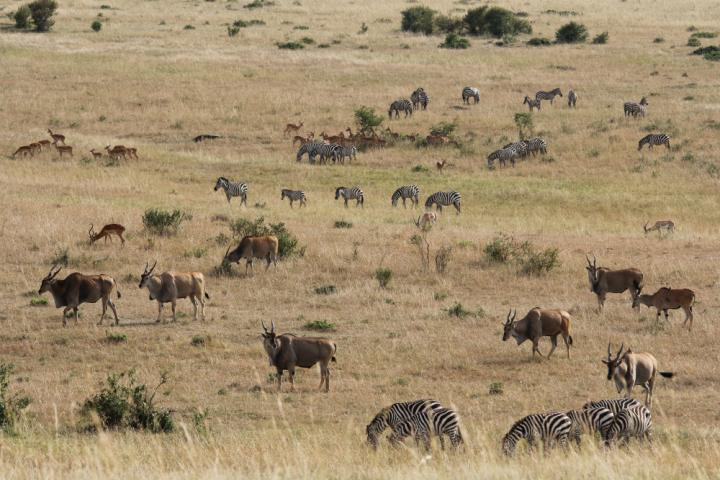
When it comes to choosing which group to hang out with, wild animals change their minds with the weather, said a new University of Liverpool study.
Researchers studied if species alter their preference for different social partners when their environment changes, to forecast how current environmental changes caused by humans affect animal populations and communities.
"In the wild, a species always exists as part of a community of other species, which affect its survival. These interactions are crucial when it comes to predicting extinction risk: if we focus only on single species in isolation we may get it very wrong," said research lead Jakob Bro-Jørgensen.
They followed the distribution in space and time of a dozen species inhabiting the Masai Mara plains in East Africa, which include buffaloes, giraffes, zebras, antelopes, ostriches and warthogs, to see how the strength of social attraction within individual species pairs changed between the wet and dry season.
All of the savannah herbivore species underwent seasonal changes when it came to their social groupings, with rainfall affecting half of all the possible species pairs, which could be due to species migration, climate adaption and feeding preferences.
The presence of migrating wildebeest during the dry season may provide a welcome social partner for some but be avoided by others, while arid-adapted species, may group together during the dry season but separate during the wet season.
"This can cause unexpected declines in species if critical bonds with other species are broken. A particular concern is when animals find themselves in novel conditions outside the range which they have been shaped by evolution to cope with," says Bro-Jørgensen.
Following on this study, researchers now plan to investigate further on how predation and feeding strategies interact to drive the formation of mixed-species groups.
The findings are published in the journal Philosophical Transactions of the Royal Society.









